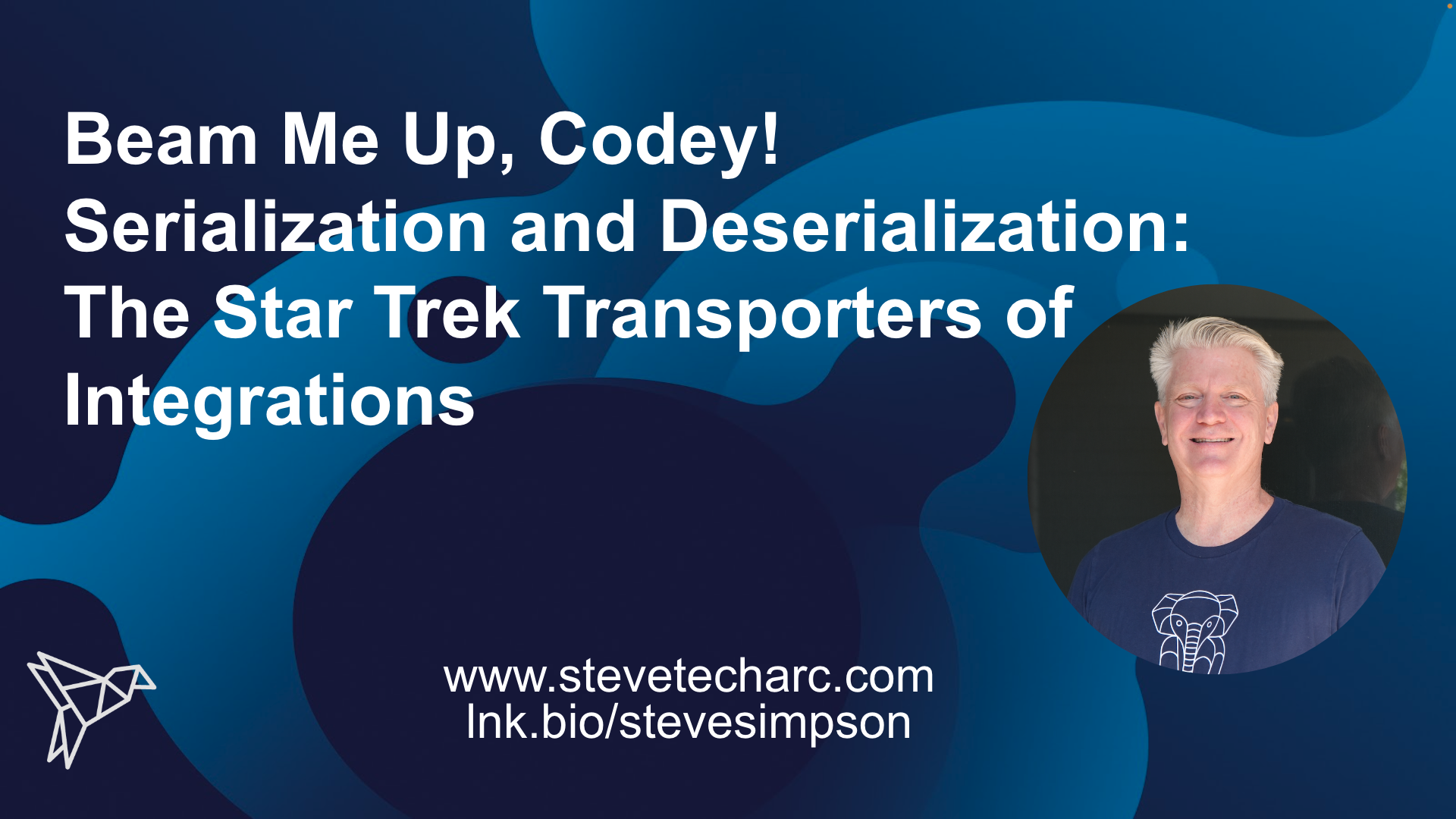

JSON Jamboree: Fixed vs. Dynamic Deserialization Showdown for Apex Callouts
When you are in Salesforce and using Apex to make callouts to JSON Web Services, you have a choice about how you can deal with the JSON for outgoing and incoming serialization and deserialization. I cover:
1) Apex with Fixed JSON classes or structures, along with some of the benefits;
2) Apex with Dynamic Deserialization, which takes code and more effort, but can allow you to process more complex JSON;
3) How you can use Custom Meta Data to handle the incoming data dynamically, giving you a flexible system that can be modified without redeploying code.

Beam Me Up, Codey! Serialization and Deserialization: The Star Trek Transporters of Integrations
Understanding Serialization and Deserialization is a key concept for Integration Architects; kind of like using the Transporter on Star Trek.
I walk through key concepts about how data can be moved between two different processes. Serialization creates a stream that is communicated to another process. At the end, deserialization is used to put the data into a usable format.